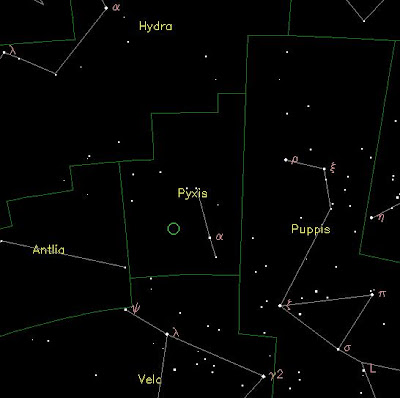
Isn't this era of astronomy incredible? There are times when I thumb through my old astronomy books with their outdated information and simply marvel over today's capabilities. Who would have believed just 50 years ago that we'd be peering into the far reaches of our Universe - let alone mapping them? Thanks to an endeavor that took more than 10 years to complete, the 2MASS Redshift Survey (2MRS) has provided us with 3-D map which cuts through the dust and pushes the envelope of the Galactic Plane out to 380 million light-years.
With our current understanding of expansion, we accept a distant galaxy's light is stretched into longer wavelengths - or redshifted. By default, this means the further a galaxy is away, the greater the redshift will be. This then becomes a critical factor in producing a three-dimensional point in mapping. To cut through the layers of obscuring dust, the original Two-Micron All-SkySurvey (2MASS) visualized the entire visible sky in three near-infrared wavelength bands. While it gave us an incredible look at what's out there, it lacked a critical factor... distance. Fortunately, some of the galaxies logged by 2MASS had known redshifts, and thus began the intense "homework" of measurements in the late 1990s using mainly two telescopes: one at the Fred Lawrence Whipple Observatory on Mt. Hopkins, AZ, and one at the Cerro Tololo Inter-American Observatory in Chile.
"Our understanding of the origin and evolution of the Universe has been fundamentally transformed with seminal redshift, distant supernovae and cosmic microwave background surveys. The focus has shifted to the distribution and nature of dark matter and dark energy that drive the dynamics of the expanding cosmos." says team member, Thomas Jarrett. "The study of the local Universe, including its peculiar motions and its clustering on scales exceeding 100 Mpc, is an essential ingredient in the connection between the origin of structure in the early Universe and the subsequent formation of galaxies and their evolution to the state we observe today. Key issues include the location and velocity distribution of galaxies, leading to the mass-to-light relationship between what is observed and what is influencing the mass density field."
What makes this work so impressive? The 2MRS has logged what's been previously hidden behind our Milky Way - allowing us to comprehend the impact they have on our motion. From the time astronomers first measured our movement relative to the rest of the Universe and realized it couldn't be explained by the gravitational attraction from any visible matter, it became a huge jigsaw puzzle just waiting to have the pieces match up. Now massive local structures, like the Hydra-Centaurus region (the "Great Attractor") which were previously hidden almost behind the Milky Way are shown in great detail by 2MRS. The Galactic "zone of avoidance" (ZoA) is still, however, a formidable barrier due to the sheer number of stars that produce a foreground (confusion) "noise". Near the center of the Milky Way the confusion noise is extreme, blocking nearly 100% of the background light; whereas far from the Galactic center the confusion noise is minimal and the veil of the Milky Way is lifted at near-infrared wavelengths
"The 2MASS catalog has proven to be quite versatile to the astronomical community: supporting observation and future mission planning, seeding studies of star formation and morphology in nearby galaxies, penetrating the zone of avoidance, providing the base catalog of redshift and Tully-Fisher HI surveys, and so on. But perhaps its most important function is to provide the "big picture" context for analysis and interpretation of data concerning galaxy clusters, large scale structure and the density of matter in the Universe." says Jarrett. "And so the primary motivation of this work, with the construction of qualitative "road" maps to the local Universe, is to provide a broad framework for studying the physical connection between the local Universe (Milky Way, Local Group, Local Supercluster, "Great Wall", etc) and the distant Universe where galaxies and the cosmic web first formed. The best is yet to come."
Image Credit: T.H. Jarrett (IPAC/SSC)










